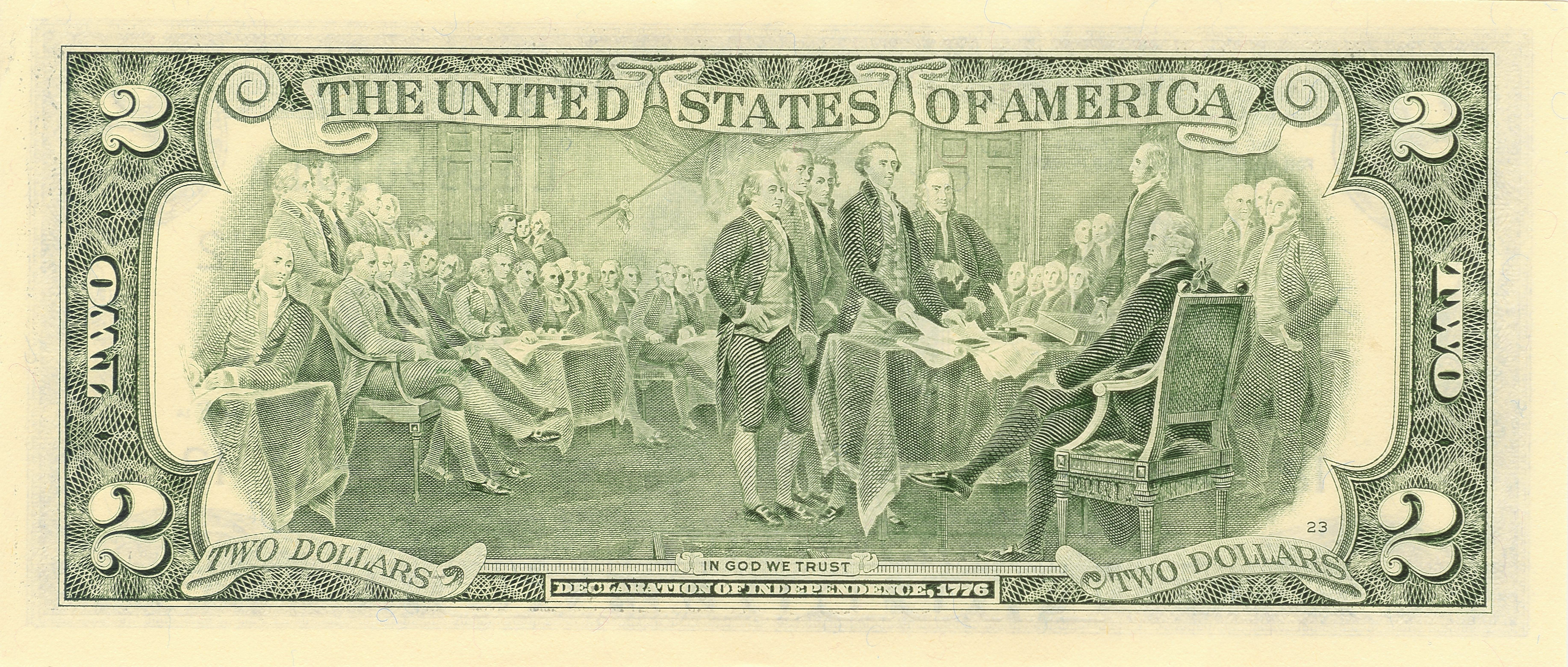True, the focus over the past few days has been on Donald Trump Jr. and
his shady meeting with a Russian lawyer, but I prefer to look at a happier moment from the past week.
Independence Day! The holiday is a time to celebrate the signing of the Declaration of Independence and all the fun times (hot dogs! beer! parades! fireworks!
NPR tweets!) that resulted because of it.
Sort of.
The adoption of the DOI remains in most people's brains - if they think about it at all - as an inevitable, patriotic event. However, for the men in the Second Continental Congress on July 4, 1776 who approved the DOI, and the men on August 2, 1776 who signed it, theirs was a dangerous act that amounted to treason.
 |
| They may look calm, but the men who approved the Declaration of Independence on July 4, 1776 were well aware of the gravity of their actions. |
So did anything actually happen to those signers after they put pen to paper?
One popular essay, written by a man named Gary Hildrith, has been making the rounds on the internet for years and describes the fallout, detailing sad and tragic fates of the men who signed.
Snopes, the hoax-debunking website,
has analyzed Hildrith's article and says it's a mix of true and false, and offers the real version of what happened to the brave signers. It's from them I get this information.
Here's what happened to a few of those signers (including the signer with the best name, Button Gwinnett):
- Five signers were captured by the British during the course of the Revolutionary War. None of them died while a prisoner, and four of them were taken into custody not because they were considered “traitors,” but because they were captured as prisoners of war while actively engaged in military operations against the British.
- Richard Stockton of New Jersey was the only signer taken prisoner specifically because of his status as a signatory to the Declaration, “dragged from his bed by night” by local Tories after he had evacuated his family from New Jersey, and imprisoned.
 |
| Richard Stockton. |
- A number of signers saw their homes and property occupied, ransacked, looted, and vandalized by the British (and even in some cases by the Americans). However, this activity was a common part of warfare. Their property was subject to seizure when it fell along the path of a war being waged on the North American continent.
 |
| Soldiers looting a house after battle. |
- Francis Lewis of New York had his Long Island estate raided by the British, possibly as retaliation for his having been a signatory to that document. While Lewis was in Philadelphia attending to congressional matters, his wife was taken prisoner by the British after disregarding an order for citizens to evacuate Long Island. Mrs. Lewis was held for several months before being exchanged for the wives of British officials captured by the Americans.
 |
| Francis Lewis. |
- Nine signers died during the course of the Revolutionary War, but none of them died from wounds or hardships inflicted on them by the British.
- According to legend, Thomas Nelson of Virginia had his home confiscated by British General Charles Cornwallis and turned into British headquarters. Nelson urged General George Washington to bombard his own house. And that is where Washington reputedly pointed the gun for the first (and singularly fatal) allied shot. Legend has it that the shell went right through a window and landed at the dinner table where some British officers, including the British commissary general, had just sat down to dine. The general was killed and several others wounded as it burst among their plates. (Another version says the Marquis de Lafayette opened fire on the home, and another still that Nelson ordered the firing on his uncle's home. Whichever way, Nelson's house still stands to this day.)
 |
| Thomas Nelson apparently ordering the firing on his house, where Cornwallis had holed up. |
And finally . . .
- Only one signer, Button Gwinnett of Georgia, died from wounds, and those were received not at the hands of the British, but from a fellow officer with whom he dueled in May 1777.
 |
| Button Gwinnett! |
So when you think of the Fourth of July, go ahead and be merry. Just remember the risk the signers took and the soldiers who fought to make it happen.
I am currently working on a book about Ah Toy, the first Chinese brothel madam in gold rush San Francisco.
Want to read more? Click "Subscribe." Please share this post and your comments.

I had my students read an article on the Revolutionary War and another on the War of 1812 for a summary assignment. It shocked me how much they did not know about the founding of our country and the subsequent fallout. But, we ended up having a great discussion about the whole thing. I'll have to bring some of this blog up (again) in my classes.
ReplyDeleteKeep in mind that most people learn their Revolutionary War history in 4th grade, and who really remembers what you learned then? (Although I distinctly remember having class meetings and making books for the Young Authors Fair.)
DeleteI would just hope that it would pique an interest in that time period, but it seems like it hasn't yet kicked in for your students.